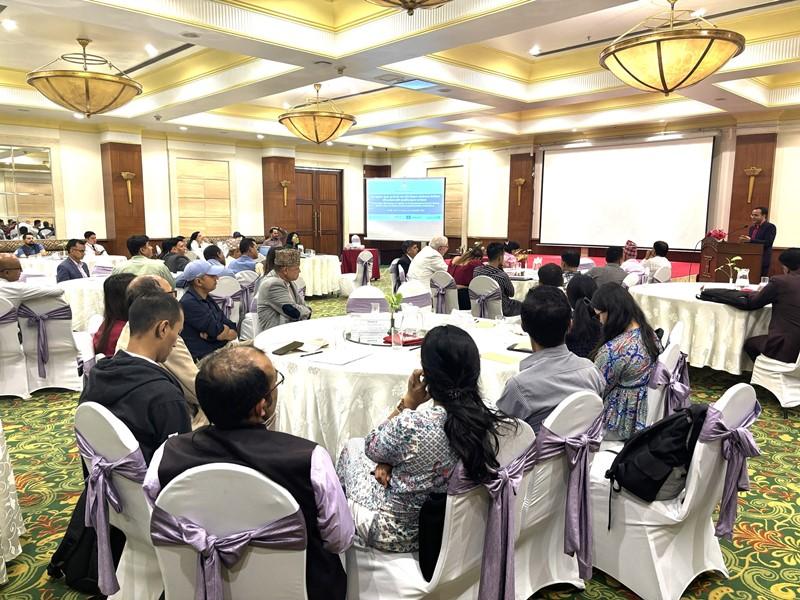
Education
in Nepal is highly vulnerable to disasters. The 2015 earthquake damaged 35,000 classrooms, leaving over a million children without safe learning spaces, with potential casualties in the tens of thousands if it had occurred during school hours. The August 2017 floods in the Terai Plain also forced 383 schools to act as temporary shelters. Despite contributing minimally to global greenhouse gas emissions, Nepal is ranked 10th on the Climate Risk Index and is severely impacted by climate change due to its fragile topography and inadequate infrastructure.
To address these challenges and develop effective policies for safe and green schools, 77 dedicated individuals—including government officials, stakeholders from national and international development agencies, educators, engineers, and civil society representatives—gathered on August 30, 2024, at The Everest Hotel in Baneshwor, Kathmandu. Their shared commitment was to strengthen Nepal’s education system against the escalating threats of climate change, natural disasters, and violence in schools.
The co-creation workshop gathered a diverse group of stakeholders for updating the Comprehensive School Safety Master Plan (CSSMP) and Green School Program Implementation Guideline (GSPIG).
The workshop was led by the Center for Education and Human Resource Development (CEHRD), with support from the Norway in Nepal, UNICEF, UNESCO, and the National Society for Earthquake Technology- Nepal (NSET). The common goal was to safeguard Nepal's children and their education from threats, violence, and climate-induced disasters by updating the guidelines effectively to enhance their resilience.
The program was chaired by Basanta Prasad Koirala, Deputy Director General (DDG), CEHRD. Mr. Nilakantha Dhakal, Director of CEHRD, welcomed the participants and highlighted the significance of the co-creation workshop. He also shared the co-creation inception meeting held in March 2024.
Representatives from UNICEF, Neven Knezevic, Sabina Joshi, Pankaj Kumar Das, and a representative from UNESCO, Sijal Pokharel, then took the floor to share updates on their efforts to incorporate climate-resilient strategies into Nepal's education sector. They underscored the urgency of their mission, especially in light of Nepal's significant vulnerability to natural disasters. Mr. Nilkantha Dhakal, Director CEHRD and Mr. Tibendra Baskota, CSS expert shared the update process of GSPIG and CSSMP respectively.
Following the co-creative process, the participants were organized into five thematic working groups for the review and update of CSSMP and GSPIG:
Theme 1: Safer Learning Facilities
Theme 2: School Safety and Educational Continuity Management
Theme 3: Risk Reduction and Resilience Education
Theme 4: The Foundation and Background of CSS
Theme 5: Green School Guidelines
Within these groups, the participants engaged in discussions, sharing insights for updating the Comprehensive School Safety Master Plan (CSSMP) and the Green School Program Implementation Guidelines (GSPIG), ensuring that these frameworks reflect current needs and challenges.
The co-creative discussion was more than just a workshop; it was a collective movement towards a more climate-resilient, safe, and green future. The co-creation process fostered a strong sense of ownership among everyone involved. The feedback gathered will be crucial in finalizing the updates to the CSSMP and GSPIG.
Mr. Basanta Prasad Koirala, DDG, CEHRD gave the closing remarks urging stakeholders to work together for the update of the guidelines under the leadership of the government.
Image gallery




